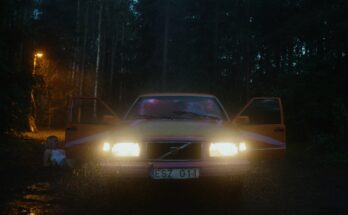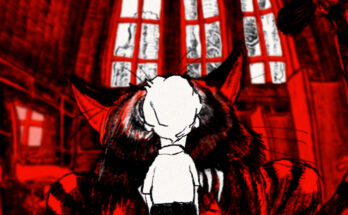Want to hear more from the actors and creators of your favorite shows and films? Subscribe to The Cinema Spot on YouTube for all of our upcoming interviews!
Managing editor & film and television critic with a Bachelor's of Arts in English Literature with a Writing Minor from the University of Guam. Currently in graduate school completing a Master's in English Literature.
After nearly fourteen prolonged years of anticipation, Final Destination returns with a sixth film. Since Final Destination 5‘s release in 2011, fans of creator Jeffrey Reddick’s viral supernatural horror franchise have been teased sixth and seventh additional films shot back-to-back. Unfortunately, those plans did not come to fruition, but there is still hope. During that hiatus, the franchise’s future has taken on intriguing developments. This includes fans speculating a new premonition set on a boat, Saw franchise screenwriters Marcus Dunstan and Patrick Melton being involved in the sixth film’s story, and potential casting surprises. (As a massive fan, you, as the reader, can tell that I have kept up on my research over the years.) Still incorporating just smidges of this and that of this current sequel’s original concept involving first responders, Final Destination Bloodlines is an unusual change of pace, mood, and tone.
Final Destination Bloodlines is written by Guy Busick (Ready or Not, Castle Rock Season 2, Scream, Scream VI, Abigail, Ready or Not: Here I Come) and Lori Evans Taylor (1000 Ways to Die, Bed Rest). The story is written by producer Jon Watts (Clown, Spider-Man: Homecoming, Wolfs, Skeleton Crew), along with Busick, and Evans Taylor. The film is directed by Adam Stein (Freaks) and Zach Lipovsky (Freaks).
In this review, I will discuss Final Destination Bloodlines. As the title of this review suggests, there will be no spoilers.
Final Destination Bloodlines Logline
According to New Line Cinema, here is the official logline for Final Destination Bloodlines.
Plagued by a violent recurring nightmare, college student Stefani heads home to track down the one person who might be able to break the cycle – her grandmother, Iris – and save her family from the grisly demise that inevitably awaits them all.
New Line Cinema
Discussion
Under New Line Cinema, Stein, Lipovsky, Busick, Evans Taylor, and Watts’ film fits into the promising new line of titles for this current decade of cinema. James Wan and Akela Cooper’s Malignant, Lee Cronin’s Evil Dead Rise, and Drew Hancock’s Companion are conversation-starters for genre fans. Undoubtedly, adding a new Final Destination sequel to the catalog will be one, too. The production studio’s custom logo change of red surrounded by black seems to state that the franchise is back for a good reason. Not only that, but almost every technical element integrated into the film was done to satisfy the fans.
The Elements at Work
Music supervisor Andrea von Foerster’s harmonious song selections alone are evidence of the $50 million USD budget at work. The pivot from Creedence Clearwater Revival’s “Bad Moon Rising” to Johnny Cash’s “Ring of Fire” in the opening scene showcases a lovely beginning act. “Shout” by The Isley Brothers is splendid and romantic, but now, its upbeat vibes will have me perceive it differently. The laughable inclusion of “Stronger (What Doesn’t Kill You)” by Kelly Clarkson is a clever parallel to a recurring adage in Final Destination 3. Additionally, music composer Tim Wynn’s score is phenomenal. The instrumental as Iris (Brec Bassinger) and her romantic partner, Paul Campbell (Max Lloyd Jones), behold their view of the city from the Skyview Tower is grand and epic.
Editor Sabrina Pitre and her team assemble some excellent sequences in the film’s most intense moments. Piecing the cracking of burnt sugar on ramekins of creme brûlée with the sounds of music and popping of champagne or wine bottles illustrates Campbell’s anxiety so well. The montage of Stefani Reyes (Kaitlyn Santa Juana) putting up family trees via her grandmother’s research on a wall is worthwhile, too. On that note, Reyes’s screams smash-cut with the whistles of a tea kettle is utterly perfect.
Moreover, Erik Campbell (Richard Harmon) tattooing his father’s name on his arm while “Without You” by Air Supply plays is magnificent work on both the editors and sound team’s ends. Director of photography Christian Sebaldt’s close-up shots of Erik’s skin here are wicked, almost as if to display dark blood on his skin.
Good Looking Supernatural Horror
Aside from the obvious greenscreen work, production designer Rachel O’Toole, supervising art director Shannon Grover, et al’s set pieces are decent. Present-day Iris Campbell’s (Gabrielle Rose) secluded fortress-like cabin in the middle of the woods is a fine environment. Much of its interiors, e.g., the closed-circuit television (CCTV) sets and the windows that let in little sunlight, parallel the psychiatric ward space occupied by Ali Larter’s Clear Rivers in Final Destination 2. At the same time, outside the property’s front gate is a compartment for outsiders to empty their belongings. In one spoken line, it was clear to me that Campbell mirrors Rivers: “It’s not you I’m afraid of.” It also helps that Sebaldt’s camera momentarily enters the cabin in a manner reminiscent of another supernatural film franchise: Evil Dead.
The Campbells’ backyard and the tattoo parlor—as shown in the promotional footage—neatly exhibit some fun Rube Goldberg contraptions. Other scenes’ set pieces have their Rube Goldberg machines that are too baffling to comprehend on a first watch. However, I love the juxtaposition of daytime and nighttime represented through the backyard and the parlor, respectively. Watching the family members jump on a trampoline is a difficult experience. Regardless, I must commend the art direction and set decoration team for putting these “pieces” together.
The hospital wherein Bloodlines spends chunks of its final act is a masterful location setting. Using gaffing for the coroner’s office and the magnetic resonance imaging (MRI) room is an example of crew putting their resources to great use. The set decorators along with costume designers Michelle Hunter and Beverlee June Fix have traumatized me with what could be possible with vending machines and cock rings.
The Direction
Stein and Lipovsky’s narration of the present-day Iris Campbell’s fear of leaving her home is also prominent in their 2019 science-fiction thriller, Freaks. There, a seven-year-old girl is prohibited from leaving their home by her father as doing so is life-threatening. The film that features Final Destination 3 star, Amanda Crew, holds intriguing insight into peering through time and doubling down on safety. I feel the co-directors’ spearheading of Bloodlines is a light-hearted rite of passage, whereas the prior films were more mean-spirited in tone.
Nostalgia incorporated into media may not touch everyone in the same way, but it sure serves its proper purpose. As both a prequel and a sequel, the callbacks (and foreshadows) to the film’s predecessors are heavy. The franchise is no stranger to Death, although it isn’t a stranger to Easter Eggs either. The log truck and the Hice Pale Ale beer brand are just a couple of recurring images that appear throughout the hour-and-fifty-minute runtime. They are nothing new and are quite popular with fans of the franchise. Next to them, the Skyview Tower’s elevator and Reyes’s drive on the highway are allusions to some of the more brutal deaths in Final Destination 2. The references to that specific sequel make me wonder about the actual survivor(s) of this film. Are characters doomed to repeat history? Or, is there some chance in the future for them to break the loop?
The Screenwriting
Busick, Evans Taylor, and Watts’ screenwriting is great to an extent, especially in incorporating elements of dramatic and situational irony, repetition, and other literary devices. Their inventive three-act structure starts with Iris’s role, the grief that stems from that, and concludes with the characters’ aim to stop Death. Viewers might find the prolific presence of clichés either clever or ridiculous. Regardless, the film heightens these devices insofar as dark comedy provides a satirical lens into the modern world. To call the jokes dumb would be to discredit the merit of the minds crafting the story. For that reason, I believe the dark comedy and the characters can be stupid. The comedy is necessary, but there needs to be a point where the line is drawn.
Instead, they cross those boundaries, which is a risk in itself. Midway into the runtime, the film’s surviving figures claim they are meticulous about avoiding Death’s clutches. However, the characters function in the same manner as characters from the Scream franchise. The rules and principles related to Death are reinforced, and the characters should follow them. Sadly, they fail to be wise about their decision-making. Literally, this Final Destination film is a reminder to “kill or be killed.”
Conversely, I appreciate the stylistics of some of the rhetorical language. For instance, Reyes emails her Professor Leo (Kwesi Ameyaw) about taking time off from college following a death in her family. For a film about the universe, i.e., Death, fighting back, this is a smart word choice. In astrological terms, Leos are fire signs. Reyes’s grandparents were meant to die in the fires of a downed tower. Leo signs are also characterized by their welcoming, protective, compassionate, driven, and conscious qualities, which feel like attributes to the Campbell/ Reyes family.
American Bloodlines
The sequel centers on two visionary protagonists—Iris Campbell and Stefani Reyes—, the latter being the first person of color, moreover, a woman of color, to lead a Final Destination film. The narrative is therefore diachronic in how Campbell, those she’s saved from Death, and the world at large have changed over time. (In a way, Bloodlines offers the same disturbing narrative that Junji Ito’s Uzumaki does; however, that is an argument for another day.) It would be reckless, then, to argue against the political rhetoric that this sixth entry provides.
For example, Final Destination and Final Destination 5 are concerned with the accusations of domestic terrorist conspiracies against the destructions of an aircraft and a bridge; Final Destination 2 and Final Destination 5 interfere with the lives of working-class citizens; and Final Destination 3 concentrates on a post-World Trade Center reality emphasizing American nationalism, while Final Destination 4 highlights the Western pride through the perspectives of college kids, a Karen, a Ken, and a cowboy. Consequently, Bloodlines is a product of its predecessors. Its messaging suggests what many feel about living in a reality following the fall of the World Trade Center and the advent of the COVID-19 pandemic.
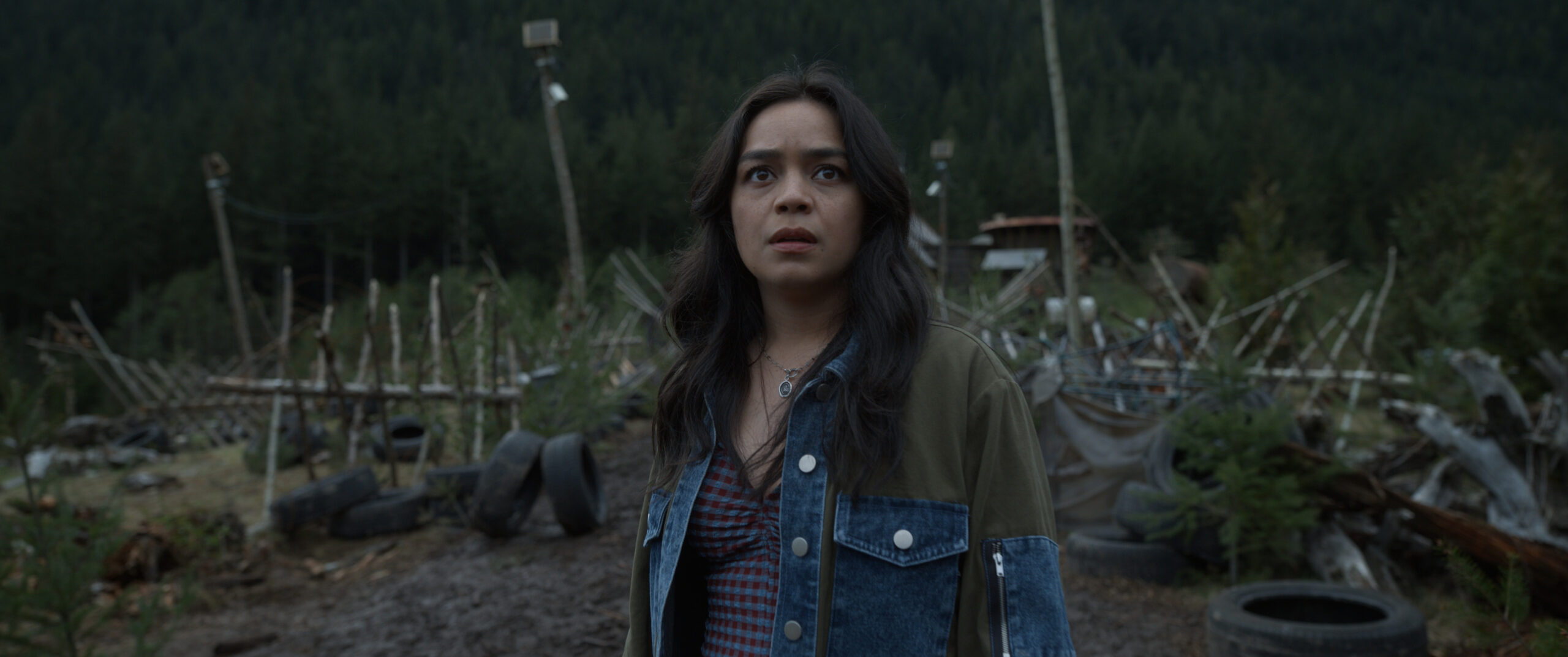
Final Satirization
Like its predecessors—especially Final Destination 3 and Final Destination 5—, Bloodlines reminds viewers that humans live in a world filled with digital death machines, as well as product placements and brand advertisements. The appearance of one specific video game title is too on the nose not to include. It has much to do with death as Final Destination does, but it is also used as a marketing tactic to sell more copies. In the grand scheme of things, the film pokes at businesses, such as Grindr, Planters, and Reese’s, and the class system.
The Skyview Tower’s opening consists of affluent individuals, while Iris and Paul Campbell find their way through to the top. This tower, with its sole elevator and sole staircase, places characters into a state of worry. It’s thus a solid appeal to logos to offer a commentary on safety, which was the idea for the first responders concept. Like Freaks, Iris Campbell’s insistence on staying inside is meaningful. Her apprehensions directly result in generational trauma. However, what she gets right is that everything that could go wrong outside is bound to occur. It’s no surprise, then, that the pandemic interfered with this sixth film’s narrative development. Still, it benefits all the better in the long run.
Cousin Erik’s parlor scene is a clever metaphor for capitalism, as he’s shown struggling to break free. His chains are moved by a ceiling fan—a smart symbol for the machine within the larger megamachine that is society, or in this franchise’s case, the Death algorithm. Given how Bloodlines attempts to beat the supernatural entity once and for all, I’m amazed by the screenwriters’ narrative techniques. It’s almost as if to insinuate that certain political figures have trapped society in a vicious historical loop, but more on that idea later…
Risks of Fear and Not Dying
When the universe speaks, you pay attention.
Iris Campbell (Gabrielle Rose), present day
As a long-time fan of the Final Destination film series, it was important that I finally scratch that itch of whatever it is that makes me enraptured by narratives enshrouded in death, which ties brilliantly into the horror genre. In the early 2020s, I was introduced to the late French psychoanalyst Anne Dufourmantelle’s critical text of philosophical micrographia, In Praise of Risk, wherein she breaks down the various forms of risk. Final Destination is a perfect framework to apply this theory and dispute how much weight a series of movies such as this actually carries.
Bloodlines involving Iris Campbell saving strangers from their imminent deaths atop a skyscraper employs claustrophobia (the fear of cramped spaces), but more so acrophobia (fear of heights). According to Dufourmantelle, “To welcome fear is also to welcome the possibility of joy, the effraction of alterity, of the unknown, and of the living; it is to leave renunciation behind and this is what’s terrible. Fear protects us from such a risk like an anxious, unhappy mother” (43). Fear isn’t merely something to conquer. It is also important that we understand it, deny its manipulation, and refuse to be affected by it.
Campbell is crucial in Final Destination mythos due to her unabashed relationship with Death. Dufourmantelle defines the risk of one’s life as “an act that pushes ahead of us on the basis of a still unknown knowledge” (2). While ethos and logos are vital rhetorical appeals, Campbell’s kairos, i.e., timing, is immaculate. Not dying is an act of revolt against the franchise’s invisible antagonist, something most characters do not cherish.
Risks of Hauntings, of Leaving the Family, and of the Spiral
With fear comes haunting, to be in a limbo state of life. Dufourmantelle asserts: “We are haunted and don’t know it, or only slightly if our nightmares remind us from time to time. … To be haunted is to be at grips with a past that never ceases to return, making the present into an echo chamber, saturating it with variations that are incompatible with the pure present of the event, which it ceaselessly displaces” (168). Recognizing Death as an immense form of haunting means living with fear as a constant obstacle. For Final Destination‘s visionaries, the reality in which people are meant to die is taken over by a reality in which they’ve cheated Death, thus the hauntings.
To return to the post-pandemic lenses is to call upon agoraphobia, the fear of leaving home. Since Bloodlines centers on the Campbells and Reyes as Iris’s descendants, there is an increased risk of isolating oneself from family. Of this risk, Dufourmantelle writes: “There is no end to leaving the family except by recreating friendship and intelligence with blood relations; it is a movement without remorse, passionate, slightly mad, to find elsewhere what makes of us beings capable of love and joy, liberated from the scenarios of a past outside of memory” (23). Between Iris Campbell, her daughter Darlene (Rya Kihlstedt), and Stefani Reyes, there are amends to be made.
The risk of the spiral, then, essentially consists of working with the past and its trauma. For Dufourmantelle, it means traveling through the loop and redefining what’s familiar. The spiral is the substitution of prior knowledge with new knowledge, such as in the metamorphosis of language and perception. However, this movement is violent and irreversible, the self-destruction of what was into what will be.
Darkness, Revolution, and Hell
Dufourmantelle speaks of night and darkness as truth. “[I]n our relation to chance, death, time, love, and especially to our birth, we must confront a degree of absurdity that will never be resolved in any system of knowledge, any given order, any secret, or any conspiracy” (173). In life, there is truth broken down by the laws of nature and other aspects. In death, however, nothing makes sense. Furthermore, Final Destination teaches us to fight against higher powers, to rebel. Of revolution, Dufourmantelle describes “the consent to lose everything; and such moments are rare because we are loathe to let go of anything [and that] requires a madness, a vision, but mainly a solidarity” (178).
The main reason why survivors of premonitions perish in the Final Destination films is due to the lack of solidarity. Bloodlines is the closest that human characters get to winning, although that isn’t saying much. At the end of the day, the largest risk is whether or not one has endured Hell. In writing about the Greek mythological character, Eurydice, Dufourmantelle states: To climb out of Hell is … to follow the thread of a voice that calls from furthest away; and this same voice that calls to you gives you a new body, a consistency, and a shelter” (185). Whereas Hell is equated with Death—or not living enough—, it is life that urges us to persevere.
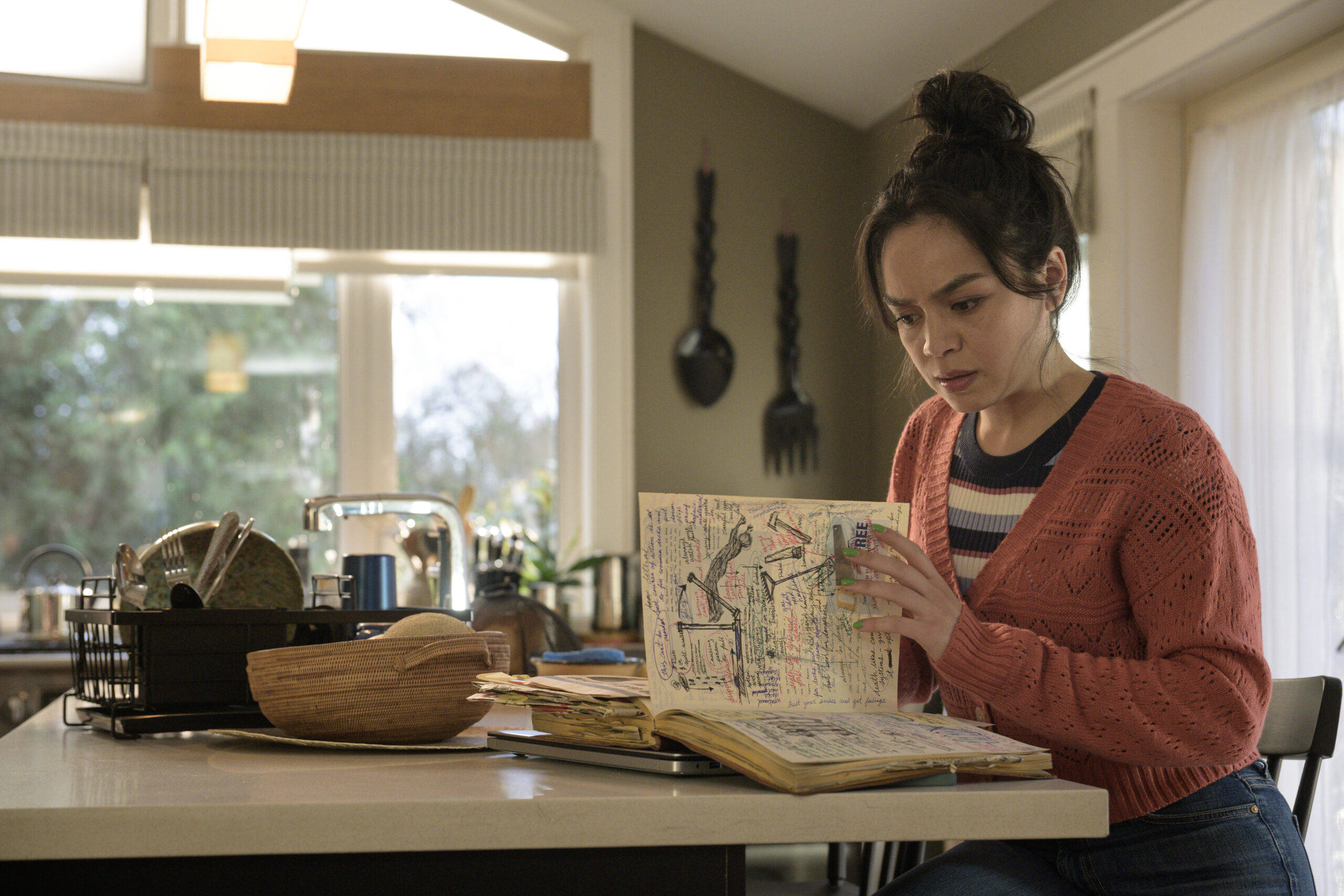
The Crew Behind Final Destination Bloodlines
Jeffrey Reddick is the creator of the Final Destination film franchise.
Christian Sebaldt (FearDotCom, Resident Evil: Apocalypse) serves as the director of photography. Eric Milner serves as the stills photographer.
Sabrina Pitre (Two Sentences Horror Stories Season 3, Love Death & Robots, Clown in a Cornfield) serves as the editor.
Liz Calandrello is the additional editor. Stuart Sperling and Ashley McCloud are the assistant editors.
Music composer Tim Wynn (Freaks) scores the soundtrack. Andrea von Foerster serves as the music supervisor. Ron Webb serves as the music editor.
Jeremy Peirson and Thomas Jones serve as the supervising sound editors. Peirson is also credited as the sound designer. Phil Barrie, Joe Dzuban, and Jeff Sawyer are the sound effects editors.
Rich Delia (Don’t Breathe, Lights Out, It, Mortal Kombat, Scream, No Exit, Scream VI, Abigail, The Monkey, Borderline) and Tiffany Mak (The X-Files: I Want to Believe, Fresh, Totally Killer, Heretic) are the casting directors.
Katherine McCown (Good Boys, Swamp Thing, Birds of Prey, There’s Someone Inside Your House, You Season 3) serves as the US casting associate. Amy Costa (The Woman King, Abigail, The Parenting) is the US casting assistant.
Heather McGowan (Fresh, Totally Killer, Heretic) serves as the Canadian casting associate. Lauren Au (Totally Killer), Dan Bates (Heretic), and Alycia Rose (Totally Killer) are the Canadian assistants.
Simon Burnett (Scary Movie 3, Snakes on a Plane, Totally Killer) serves as the stunt coordinator.
Nordin Rahhali serves as the visual effects supervisor. Adam Lagattuta serves as the visual effects producer.
Aesthetics
Rachel O’Toole serves as the production designer. Shannon Grover (The Butterfly Effect, The X-Files Season 10, The Predator, Peacemaker, Woman of the Hour) serves as the supervising art director.
Natasha Stoesz (FX’s Legion Season 1, The Predator, Locked) serves as the art director. Fraser Hagen and Darin van Veen are the assistant art directors.
Rebeca Nunes De Angeli, Janette Rhee, Justin Neenan, and Jennifer Yee are the set designers.
Michelle Hunter serves as the costume designer. Beverlee June Fix (Scary Movie 2, White Chicks, Deadpool 2, Under the Banner of Heaven, Monarch: Legacy of Monsters) serves as the assistant costume designer.
Christopher Pinhey serves as the makeup department head.
Dorothee Deichmann is the key makeup artist. Gitte Axen (Insomnia, Scooby-Doo 2: Monsters Unleashed, The X-Files: I Want to Believe, The Cabin in the Woods), Amber Crombach (Altered Carbon, The Man in the High Castle Season 3), Brittany Isaacs, Krista Seller, and Bev Wright are credited as the makeup artists.
Todd Masters serves as the makeup effects head. Sandy Lindala serves as the key MUFX artist.
Julie McHaffie (The X-Files Season 1, Freddy vs. Jason, Watchmen, Fear the Walking Dead Season 1) serves as the hair department head.
Diane Holme (Final Destination 3, Black Christmas, Watchmen) serves as the key hairstylist. Susan Boyd (The Stepfather, Friday the 13th Part VIII: Jason Takes Manhattan, Stephen King’s It miniseries, Final Destination 2), Alwyn Ho, and Lynnea Thomas (Supergirl Season 2, Bad Times at the El Royale, Good Boys) are the hairstylists.
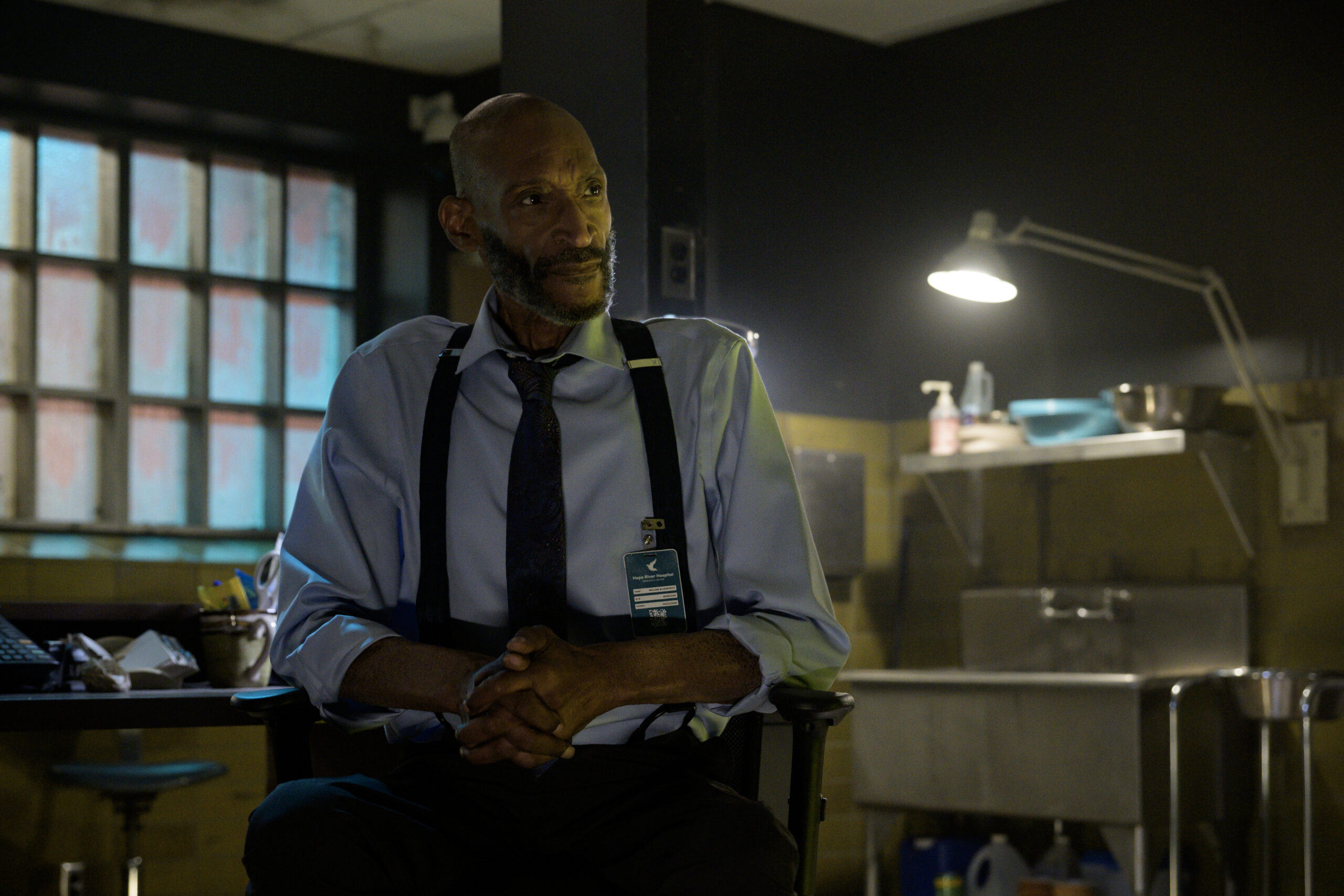
The Cast of Final Destination Bloodlines
Kaitlyn Santa Juana portrays the present-day visionary protagonist, Stefani Reyes.
Teo Briones (Ratched, Don Mancini’s Chucky) portrays Stefani’s younger brother, Charlie Reyes.
Richard Harmon (Trick ‘r Treat, Percy Jackson & the Olympians: The Lightning Thief, Bates Motel, The 100, The CW’s The Flash), Owen Patrick Joyner, and Anna Lore (Into the Dark, They/Them) portray the Reyes’ Campbell cousins, Erik, Bobby, and Julia, respectively.
Rya Kihlstedt (Home Alone 3, Heroes Reborn, Obi-Wan Kenobi, Orphan Black: Echoes) portrays the Reyes siblings’ mother, Darlene Campbell. Alex Zahara plays the Reyes’ Uncle Howard, Darlene’s brother.
April Amber Telek plays the siblings’ Aunt Brenda. Tinpo Lee plays the Reyes siblings’ father, Marty Reyes.
Brec Bassinger (DC’s Stargirl) portrays Iris Campbell in the late 1960s. Gabrielle Rose portrays Iris in the present day.
Max Lloyd Jones portrays Paul Campbell, Iris’s late husband.
Tony Todd (Night of the Living Dead, Candyman, The Crow, Hatchet, Transformers: Revenge of the Fallen, Hatchet II, Hell Fest, Scream: Resurrection, Stream) reprises his role from Final Destination, Final Destination 2, and Final Destination 5 as retiring coroner William John Bludworth.
Jayden Oniah plays a “little boy” in the late 1960s.
Minor Roles
Natasha Burnett portrays Evie, a female singer at the Skyview Tower. Garfield Wilson (Altered Carbon, The Man in the High Castle, Snowpiercer) plays Chuck, a male singer at the Skyview Tower.
Mark Brandon and Yvette Ferguson (Needful Things, Midnight Mass, Peacemaker) play Mr. and Mrs. Fuller, respectively.
Justin Stone plays a Skyview Tower bartender. Travis Turner plays an elevator operator at Skyview Tower.
Noah Bromley plays a “penny kid” at the Skyview Tower. Megan Hui (Deadpool 2, Peacemaker, Joy Ride, Rebel Moon – Part One: A Child of Fire) plays a “hat lady” at the Skyview Tower’s Sky Deck.
Brenna Llewellyn plays Val, Stefani Campbell’s college roommate.
Janelle Beadall plays Tara.
Ardy Ramezani plays a photographer.
Kwesi Ameyaw plays Stefani’s Professor Leo.
Troy McLaughlin plays a chaplain.
Jeanie Cloutier plays a suspicious doctor.
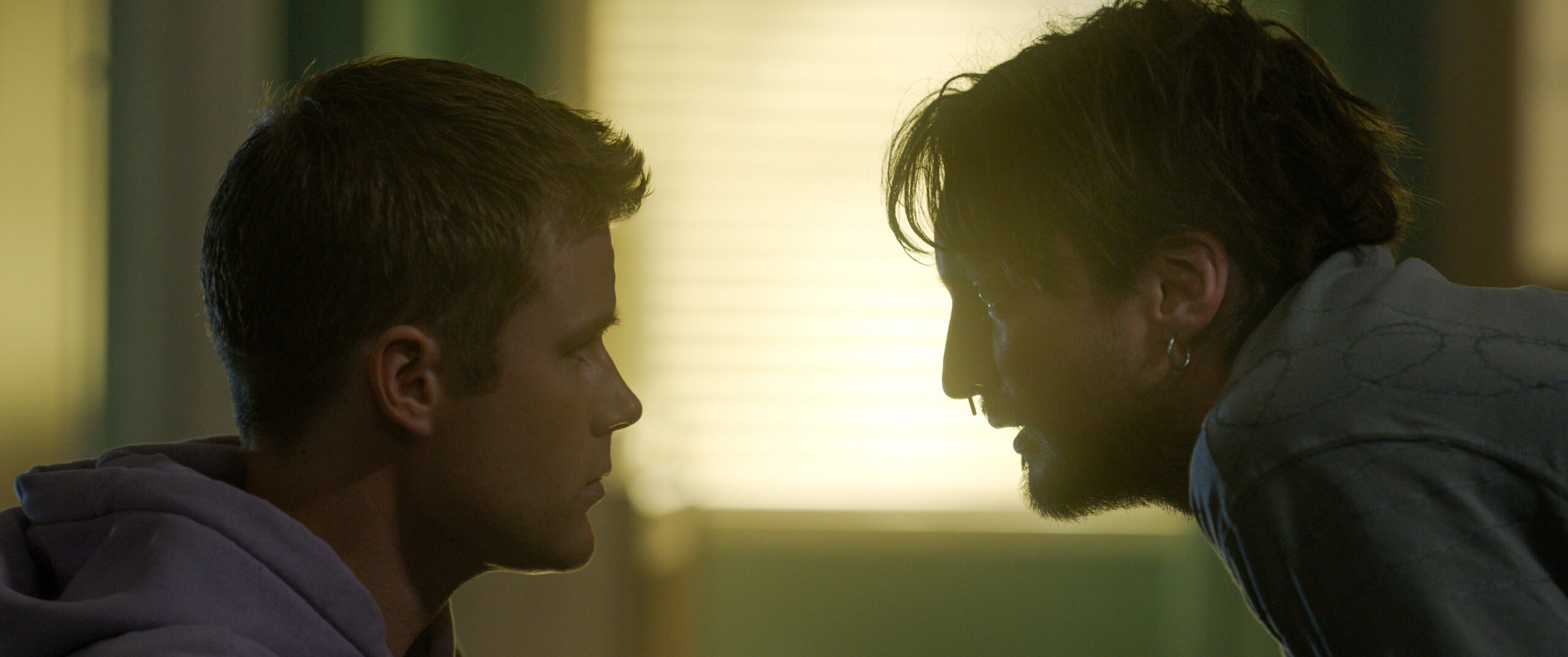
Performances and Character Developments
As Erik and Bobby Campbell, respectively, Harmon and Joyner have the most chemistry out of every pair in the film. Yes, Santa Juana’s Stefani Reyes is the protagonist of Bloodlines. Yet, the true levity arises from the Campbell brothers’ fight for life against Death. Their means and methods are not the best, although it’s the thought that counts. This brotherly love is powerful, albeit not powerful enough. Bobby represents doubt in their risk of suspense, while Erik is just a flat-out fun character. Suffice it to say, the film feels empty when they are not present on screen.
Todd’s send-off is a brief yet poignant performance. It’s predictable to figure out what exact role he plays, but once this is revealed, the story settles into clarity. William Bludworth was previously seen as the human embodiment of Death. In Bloodlines, however, the character represents much more than that. It’s easy to see Stefani Reyes as the personification of Death, especially when one cousin says, “I love you, but sometimes I really hate you.” Bludworth and Reyes are interesting parallels in this regard—we enjoy their presence, yet it’s overwhelming to take in. Todd’s last words as Bludworth resonate with me a lot. The character has helped carry much of the franchise, so the time had to come when he eventually spread positive rhetoric. I love him this time around, having shown his growth from the first film to this one.
Final Thoughts on Final Destination Bloodlines
For the diehard fans, the wait is finally over. Although, now we must question if Judgment Day has arrived for the franchise or if finality can be postponed to a seventh entry. Looking at Bludworth’s role here, I believe the possibility exists. On the one hand, I am content enough as it is with the release of Bloodlines. Its runtime is twenty minutes longer than each of its predecessors, which makes this feel like an event film. Given the untimely passing of Todd, I cannot fathom a seventh film giving him the Paul Walker or Carrie Fisher treatment. On the other hand, the introduction of “bloodlines” being the ultimate weapon against Death’s design shows us that the cycle hasn’t been completed. Rather, it’s only a new beginning, and I cannot imagine a future where we learn that Bludworth might have a family of his own.
Ultimately, Bloodlines is a film about how one person prevents unwise souls from affecting the lives of others. Money truly is the root of all evil, if we had to put deeper thought into the matter. I can easily relate to this profoundly because I understand what it means for bad individuals to risk their conceit to satisfy their egos. To ignore what is expected, recommended, or requested of you and to instead throw others’ lives and wishes away is harmful. Personally, Final Destination Bloodlines isn’t my favorite film upon a first watch, but it does have a lot to work with. For that, I can only express utmost gratitude.
4.5/5 stars
Final Destination Bloodlines is now playing in theaters!
For more horror and thriller-related news and reviews, follow The Cinema Spot on Facebook, Twitter, Instagram, and Bluesky! Also, follow us on Letterboxd for further feature film, short film, and limited series reviews!
Managing editor & film and television critic with a Bachelor's of Arts in English Literature with a Writing Minor from the University of Guam. Currently in graduate school completing a Master's in English Literature.



